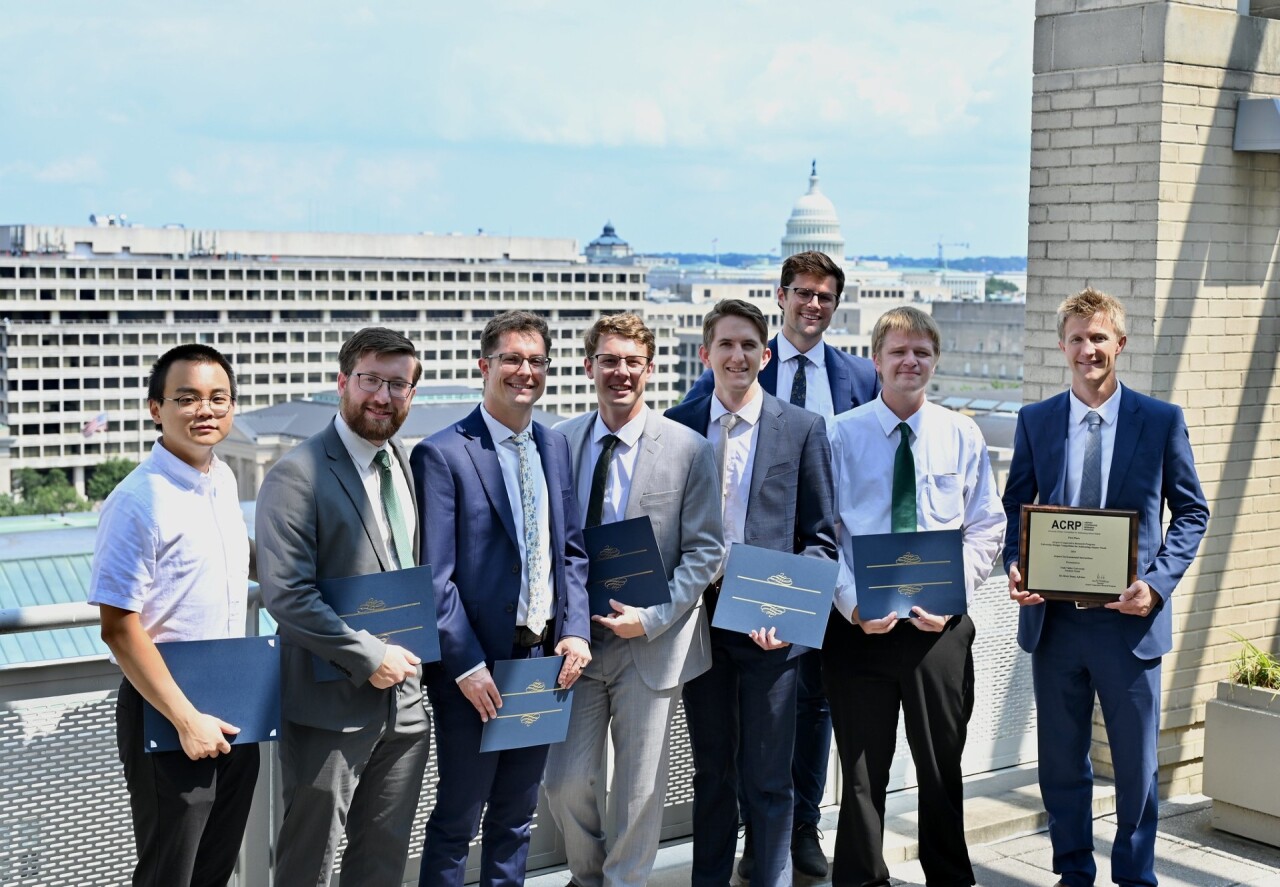OREM, Utah — A team of ten mechanical engineering and three computer science students from Utah Valley University are taking home a top prize at the Airport Cooperative Research Program University Design Competition for Addressing Airport Needs. Their "Autonomous Electric Aircraft Tug" submission secured first place in the Airport Environmental Interactions design challenge.
Their design is a way to change how aircraft are moved from jetways to takeoff and back and claim to improve safety, save fuel, and reduce emissions in the process.
According to the University, traditionally aircraft are guided into position by workers using push-back tractors and jet engines. The team says this is a costly and inefficient process that burns fuels and emits heated emissions into the air. The team of 13 students, led by UVU mechanical engineering Professors Matt Jensen and Brett Stone, have developed a working prototype of the autonomous, electric aircraft tug that can remotely steer aircraft.
UVU students showcased the new technology at the Provo Airport back in April demonstrating its ability to move aircraft.
The researchers say that a 737 airliner at Salt Lake International Airport currently consumes around 70 to 80 gallons of jet fuel while it taxis down the runway for takeoff. With this new technology the team claims they could save the airport millions in fuel costs ($2.5 million in saving in 2019 based off of estimates). Moreover, the team says emissions saved would be the equivalent of removing 2,400 cars from the road each year.
“In some ways, it’s not a groundbreaking idea,” said Brett Stone a professor leading the team at UVU. “We have self-driving cars, we have military drones that can be flown from other places, we have tugs, and we have electric vehicles. All the technologies are proven; they’re just not proven together.”
The UVU team members were awarded $3,000 for their win through the ACRP program. The winning universities were selected by a distinguished panel of industry, Federal Aviation Administration (FAA), and academic experts. The ceremony was attended by senior FAA and Transportation Research Board officials, who witnessed each team’s presentation on their submissions, followed by a short Q&A session.

“This recognition highlights the exceptional talent and dedication of the students who worked tirelessly on the project,” said UVU Professor Brett Stone. “They balanced this project with their other academic commitments, full- and part-time jobs, and family responsibilities. I am so very proud of their accomplishment.”
The development of the tug was made possible in part by a $10,000 grant from the Rocky Mountain Power Foundation. “These students are the creative problem solvers that Utah and our world need,” said Jonathan Whitesides of Rocky Mountain Power. “That’s why the Rocky Mountain Power Foundation is thrilled to support their work to develop electric-powered tugs — an innovative solution with potential benefits for the environment, the economy, and our shared energy future.”
With the successful unveiling of the autonomous electric tug, Professors Jensen and Stone say they are now focused on their next phase of the project: building a full size, functioning tug capable of hauling a 737-sized aircraft.
The team have already sought patents for their innovative design and are optimistic about the potential commercial availability of their tug in the future.




